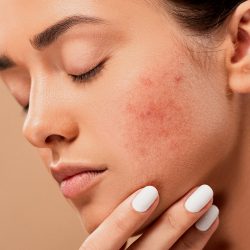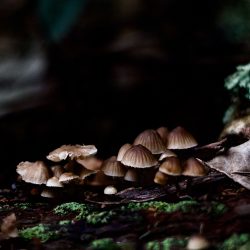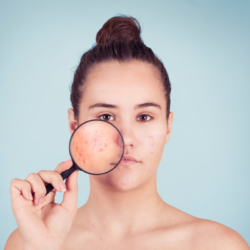Sinusitis can be caused by a virus or an allergy, by air pollution, or just smoking. Fortunately, sinusitis is mild, and it can be treated with natural remedies before you start taking antibiotics. In this article, here are tips for recognizing and treating sinusitis naturally.
ENT sphere and sinusitis
Sinusitis is acute or chronic inflammation of one or more of the four pairs of mucous cavities called “sinuses” that communicate with the nasal cavity. Usually, sinusitis affects only one sinus, on one side. It can happen that all the sinuses are concerned: it is then a pan sinusitis. We distinguish acute sinusitis which is due to an inflammation of a sinus of the face, or an infection (bacterial) which has its origin in the nasal cavities or at the level of a tooth of the upper jaw.
In this case, it is a maxillary sinusitis, which requires treating the cause, that is to say the infected tooth. In acute sinusitis which is generally characterized by violent pain and purulent discharge, there is frontal sinusitis (pain above the eye), sphenoid sinusitis (pain behind the eye), ethmoid sinusitis, especially common in young children and characterized by pain or even swelling in the inner corner of the eye. With regards to maxillary sinusitis, the pain is localized below the eye.
It is when the pus can no longer flow through obstruction of the natural drainage channels (also known as blocked sinusitis) that the pain becomes paroxysmal. Sinusitis that lasts beyond a period of about three months is called chronic. Among the most common causes: dental infections, malformation of the turbinates or nasal septum, genetic factors, among others.
The different types of sinusitis
Following viral or bacterial contamination, the mucous membranes become edematous and obstruct the sinuses, the mucus is then no longer drained properly.
Acute sinusitis: This sinusitis of the immunocompetent patient in the city is almost always viral (rhinovirus, influenza, para-influenza virus). A small percentage develop a secondary bacterial infection with streptococci, pneumococci, Haemophilus influenzae, Moraxella catarrhalis, or staphylococci. Sometimes a periapical tooth abscess from a maxillary tooth spreads to adjacent sinuses. Acute nosocomial infections are most often bacterial, and usually involve Staphylococcus aureus, Klebsiella pneumoniae, Pseudomonas aeruginosa, Proteus mirabilis, and Enterobacter. Immunocompromised patients may have acute invasive fungal sinusitis.
Chronic sinusitis: It involves many factors which combine to create chronic inflammation. Chronic allergies, structural abnormalities (nasal polyps), environmental irritants (air pollution, tobacco smoke), mucociliary dysfunctions, and other factors interact with infectious microorganisms to cause chronic sinusitis. Microorganisms are frequently bacterial (possibly within a biofilm on the mucous surface), but they can be fungal. Numerous bacteria have been implicated, including Gram-negative bacilli and anaerobic oropharyngeal microorganisms; poly microbial infection is common. In a few cases, chronic maxillary sinusitis is due to a dental infection. Fungal infections (Aspergillus, Sporothrix, Pseudallescheria) can be chronic and tend to affect elderly patients and immunocompromised patients.
Allergic fungal sinusitis: It is a form of chronic sinusitis characterized by diffuse nasal congestion, very viscous nasal secretions, and often nasal polyps. This is an allergic-type response to the local presence of fungi, often Aspergillus, and is not caused by an invasive infection. Invasive fungal sinusitis: It is an aggressive infection, sometimes fatal in immunocompromised patients, usually caused by Aspergillus or Mucor species.
What are the symptoms of sinusitis?
Sinusitis can be acute when it heals within 3 weeks or chronic when it tends to recur or persist for more than 4 weeks.
The symptoms of sinusitis are the same:
- Facial pain located above the eyebrows, teeth of the upper jaw, at eye level (peri and retro-orbital)
- Feeling of pressure in the sinuses
- Nasal congestion
- Purulent nasal secretions
- Fatty cough
- Mild fever
- Bad breath (halitosis)
- Decreased or lost sense of smell
Natural treatments to reduce the symptoms of sinusitis:
Cleanse the sinuses with salt water:
Running salt water successively through each nostril can treat and prevent sinusitis. Also, spraying salt water into the nasal cavity several times a day can help relieve congestion.
Moisten the nasal cavities with water vapor:
Just breathe in the steam from a bowl of boiling water. We use a large towel to cover his head and the bowl, in order to concentrate the steam as much as possible. However, be careful not to go out after inhaling to avoid catching bronchitis stupidly.
Taking a hot shower can relieve congestion:
You can also apply warm compresses around the nose, cheeks and eyes for 20 to 30 minutes, two to four times a day.
Use a humidifier if necessary: Ideally, you try to keep the humidity in the house, especially the bedrooms, around 40 to 50%.
Remember to hydrate: Drinking is essential because proper hydration helps thin mucus, making it easier to flow. This allows the sinuses to regain their normal drainage.
However, alcohol is avoided, which can cause swelling of the lining of the nose and sinuses.
Avoid using decongestants: These decongestants in the form of nasal sprays (Dristan®, Otrivin®) should be avoided for more than three days, as they can cause rebound sinusitis.
Avoid smoking: We avoid cigarettes and exposure to second-hand smoke because tobacco irritates the mucous membranes.
Do a Propolis cure: Propolis is a great ally in the fight against infectious diseases of all kinds, especially ENT and bronchial such as sinusitis. Do in discontinuous cures preferably, do not use for more than 2 to 3 consecutive weeks.
Which medicinal plant to choose to treat sinusitis?
Alder is THE remedy for any inflammatory syndrome starting from the mucous membrane in the acute suppurative phase such as sinusitis.
Indicated in chronic sinusitis, Horehound is an anti-inflammatory by inhibiting cyclo-oxygenase Cox2 and an antifungal.
This plant is indicated in sinusitis by its mucolytic, anti-inflammatory and antimicrobial properties.
Chamomile has antimicrobial and anti-inflammatory activity. It is indicated in various forms of sinusitis. The use of antibiotics is only helpful in the rare cases where the sinusitis is bacterial. A yellow nasal discharge, for example, is a sign. The general practitioner or ENT doctor can confirm this by examining the appearance of the mucous membranes.
IMPORTANT: Under no circumstances can the information and advice offered on the blog be used as a substitute for a consultation or a diagnosis made by a doctor or health professional, the only ones able to adequately assess your state of health. Do not hesitate to contact us via our secure form, for personalized advice.







